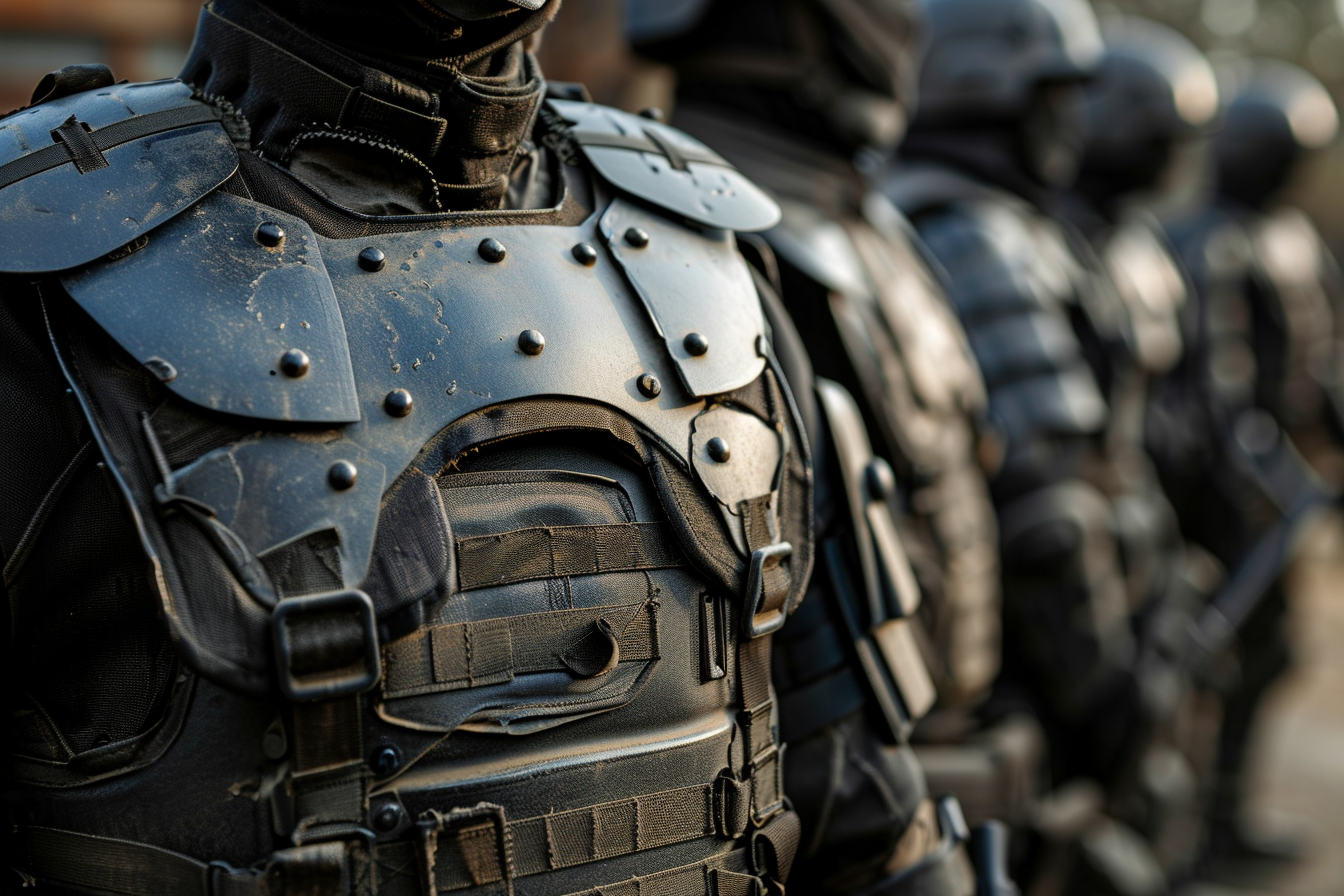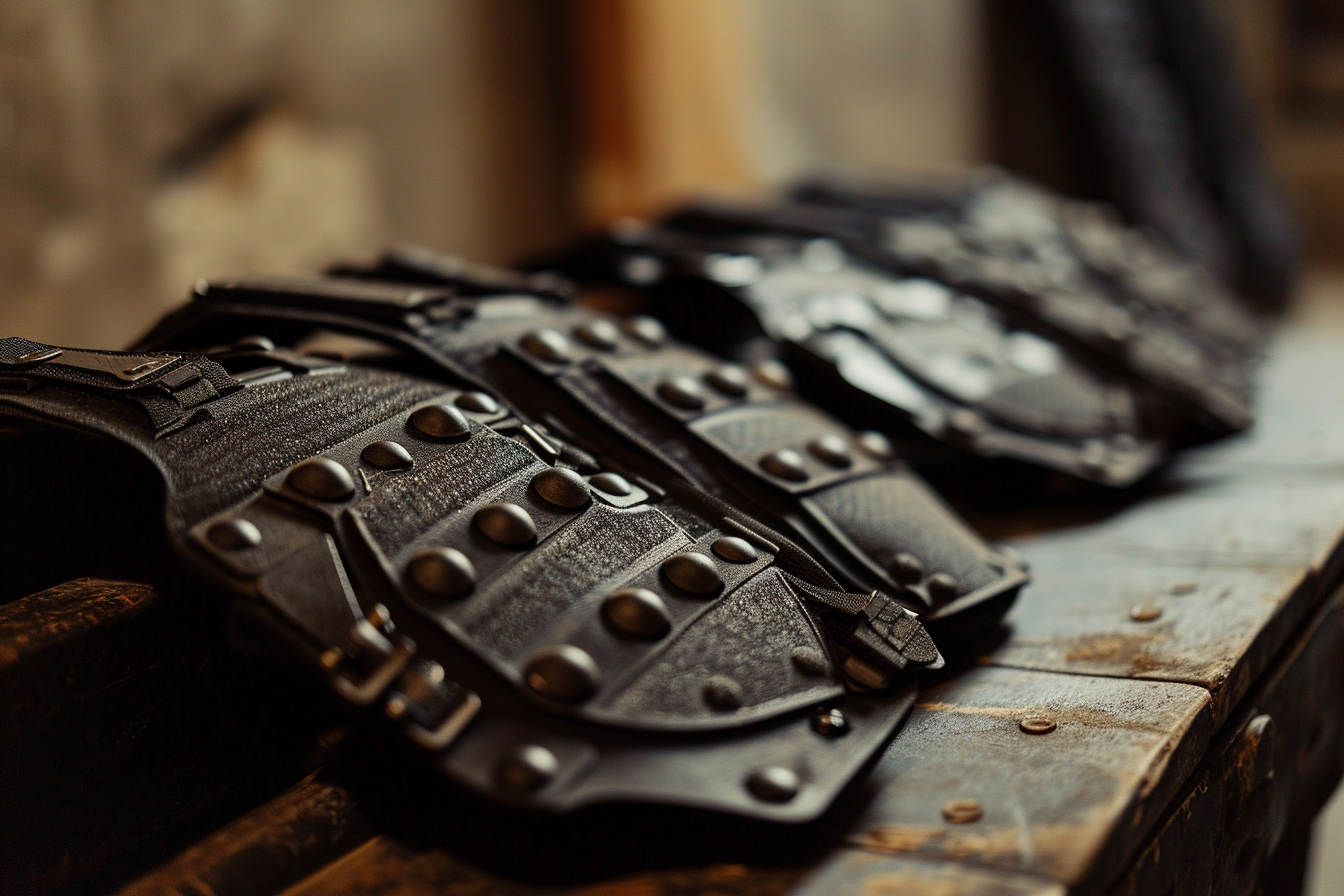Ballistic Protection Materials: Evolution Beyond Metal
Historically, metal served as a measure of durability. After World War II, technological progress produced weapons with greater energy. Conventional metals no longer meet ballistic protection requirements.
The Emergence of Synthetic Materials: Kevlar and Beyond
Kevlar is a synthetic fibre known for its high tensile strength. It enables the manufacture of protective clothing that resists pistol bullets and knives. Its flexible nature may contribute to tissue injuries. Researchers investigated ultra‐high‐molecular‐weight polyethylene and carbon fibres as alternatives. These materials exhibit increased strength. However, their hardness is inadequate, thereby maintaining the risk of bone fractures.

Composite Solutions: Hard Plates and Lightweight Alternatives
Researchers incorporated hard plates, such as steel, into protective vests. This composite approach increases projectile resistance. The added weight, however, is a drawback. Magnesium alloys were evaluated as a lighter alternative. They did not provide adequate projectile resistance, consequently limiting their application.
Ceramics as an Effective Alternative
Ceramics provide high hardness and lower weight compared to steel. Current research focuses on developing ceramics that are harder, lighter, and less brittle. Design improvements aim to meet stringent ballistic protection standards.
Carbide Ceramics: Advances in Ballistic Protective Materials
Carbide ceramics are integrated into protective vests. Combined with strong fibres, they absorb kinetic energy from projectiles. Research at Stanford Advanced Materials (SAM) indicates that carbide ceramics can reduce projectile penetration by up to 37% under standard testing conditions.

The Role of Tungsten: Density and Hardness in Ballistic Applications
Tungsten is recognised for its high density and hardness. After World War II, tungsten was used in armour‐piercing munitions. Its mass and hardness enable it to penetrate armour. Researchers have developed composite armour systems that incorporate tungsten for enhanced performance.
Composite Armour Systems: Combining Alloys and Ceramics
Composite armours utilise a sandwich structure that combines alloys with ceramics. The layers exhibit different hardness levels. Consequently, the design disrupts penetrating projectiles. Oceania International LLC has contributed data to these developments.
Beyond Conventional Armour: External Ceramic Plates
Some nations attach external ceramic plates to vehicles. This measure reinforces the main armour. Laboratory tests indicate that external plates reduce projectile penetration by 22% over 1 000 000 cycles. Research conducted by Stanford Advanced Materials (SAM) on 01/01/2020 confirmed these results.
Conclusion: An Ongoing Process of Material Development
The evolution of ballistic protective materials results from continuous technical efforts. Materials such as traditional metals, synthetic fibres, ultra‐high‐molecular‐weight polyethylene, carbon fibres, ceramics, and tungsten have been examined. Researchers continue to quantify improvements and enhance protection levels. For further information, please visit our homepage.

 Bars
Bars
 Beads & Spheres
Beads & Spheres
 Bolts & Nuts
Bolts & Nuts
 Crucibles
Crucibles
 Discs
Discs
 Fibers & Fabrics
Fibers & Fabrics
 Films
Films
 Flake
Flake
 Foams
Foams
 Foil
Foil
 Granules
Granules
 Honeycombs
Honeycombs
 Ink
Ink
 Laminate
Laminate
 Lumps
Lumps
 Meshes
Meshes
 Metallised Film
Metallised Film
 Plate
Plate
 Powders
Powders
 Rod
Rod
 Sheets
Sheets
 Single Crystals
Single Crystals
 Sputtering Target
Sputtering Target
 Tubes
Tubes
 Washer
Washer
 Wires
Wires
 Converters & Calculators
Converters & Calculators
 Write for Us
Write for Us
 Chin Trento
Chin Trento



